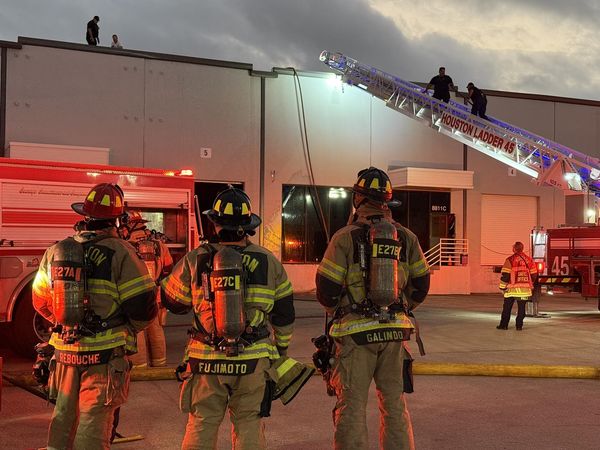Fifty years ago last month, prisoner Fred Gomez Carrasco and an accomplice, Rudolfo Dominguez, died in a shoot-out during an attempted prison break at the Huntsville “Walls” Unit.
Tragically, two prison educators that Carrasco held hostage, teacher Yvonne Beseda and librarian Julia Standley, were also killed. It was a bloody and tragic end to an 11-day siege that captured the nation’s attention. Questions about prison policies that allowed Carrasco to smuggle guns and ammunition into the Walls Unit and about the final shoot-out have never been fully answered. A review of the siege and the events leading up to it is necessary if we are to learn from it and move ahead.
I was 19 when Carrasco, Dominguez, and another inmate named Ignacio Cuevas took over the education building at the Walls Unit. Carrasco was no stranger to me and others since the media covered him extensively. He was a brilliant criminal who built and oversaw what we today call a cartel. He ran a vertically integrated international heroin smuggling operation.
Carrasco was also a convicted killer, and authorities connected him to dozens of murders in the United States and Mexico.
Many San Antonio Chicanos followed his exploits in 1973 when he outsmarted a police search for months. According to David Montejano, in his book Quixote’s Soldiers: A Local History of the Chicano Movement, 1966-1981, Carrasco, in some circles, became a folk hero. Carrasco was compared to the legendary Gregorio Cortez, who was accused of the murder of a Texas sheriff in 1901 and was the target of a massive hunt that included the Texas Rangers.
Carrasco’s capture at the Southside’s El Tejas Motel in July of 1973 was downright cinematic. It seemed to follow the script of a Western movie, with Carrasco playing the part of the Mexican outlaw, and a white cop named “Big Bill” Weilbacher the role of the lawman. Weilbacher’s pursuit of Carrasco has become, for some Texans, symbolic of the historic tension between Anglos and Mexicans here. In July, during the final shootout at the aptly named El Tejas motel, Carrasco was wounded and captured. Bill Weilbacher won that round. During the siege, Carrasco disparaged Weilbacher and accused him of killing some of his associates, but the battle between these deeply flawed men played out until the very end. In a tape-recorded conversation near the end of the siege, Carrasco challenges Bill Weilbacher to a duel. “I will come outside and shoot it out with him,” he tells a reporter.
Carrasco was a brilliant but vicious drug dealer whose drug cartel flooded our streets with heroin; Weilbacher was a rogue policeman feared in the barrios and accused of being involved in racially motivated arrests and beatings on the city’s predominantly Black East Side.
My years of reporting on the story for a soon-to-be-released podcast titled El Señor raises some serious questions for the San Antonio police about a cop who was allowed to operate with impunity for many years. One retired cop told me, “I don’t know how Weilbacher got away with it for so long.”
It’s not just prison officials and law enforcement that must confront their actions for their role in the Carrasco episode; those of us in the Chicano community who tacitly supported Carrasco also need to come to terms with our defense and championing of a drug dealer. My family, like many others in the community, didn’t escape the scourge of heroin addiction that Fred Carrasco helped facilitate. One of my cousins, a heroin addict and dealer known as “Baby,” was gunned down execution-style three days after Carrasco’s capture. Baby’s murder is still unsolved, and I recently learned that some in my family think the Carrasco organization was behind his murder. Looking back on those days, I admit to unease over my youthful fascination with Carrasco, the outlaw. I, and many others, chose to look past Fred Carrasco’s role in tranquilizing thousands of men and women in our neighborhoods. We need to look inward and explore our reasons for disregarding the impact of Carrasco’s multi-million-dollar heroin business on our families and communities.
Soon after the end of Carrasco’s takeover, Governor Dolph Briscoe agreed to a public inquiry to resolve questions about the actions of prison officials and law enforcement—the Texas Rangers in particular—but Texas officials successfully “kicked the can down the road” until the national news story had largely faded from the public consciousness. I so far have found no record of a public inquiry.
I wish I could say that 50 years after Fred Gomez Carrasco’s death, the issues his case illustrates have been resolved. However, after my conversations with Carrasco associates, cops, criminal defense attorneys, and scholars, it is clear that not much has changed. Issues of race, poverty, addiction, criminal justice, and mass incarceration are very much still with us. Confronting the story of the siege and the rise of Fred Gomez Carrasco may help us tackle those persistent issues.







